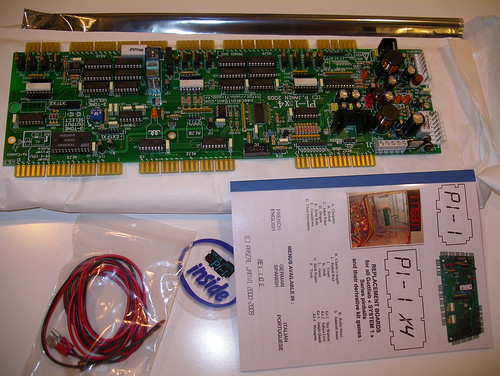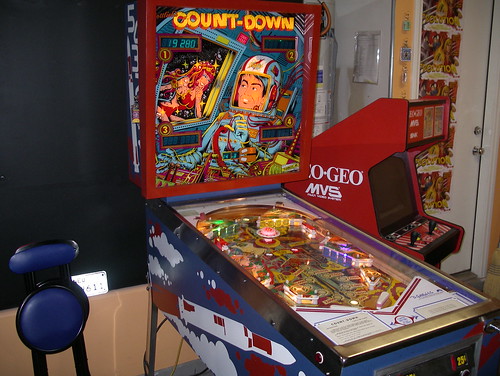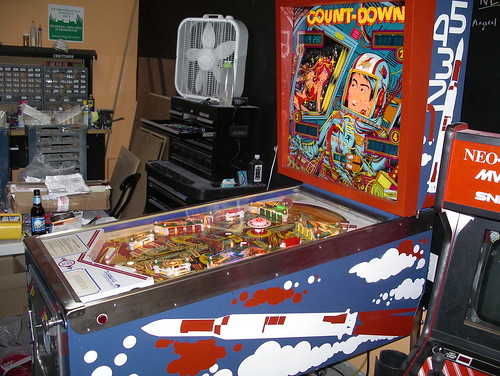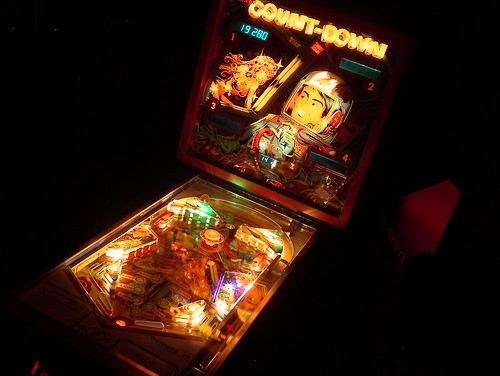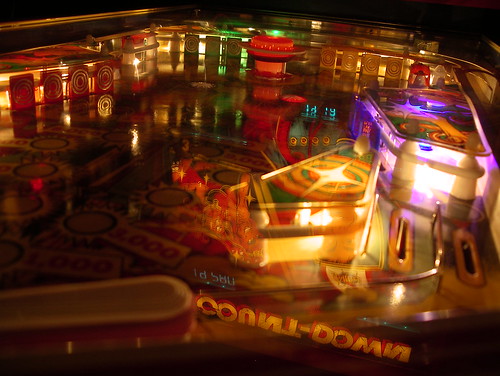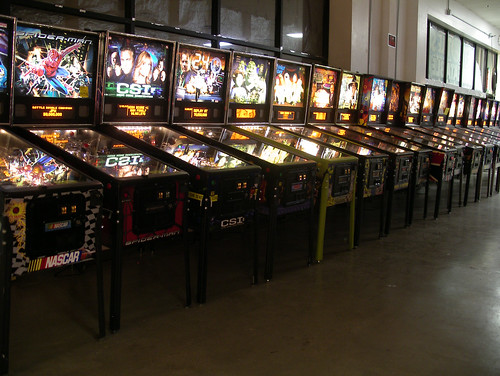Originally published in Las Vegas Citylife on April 17, 2013
If you grew up in Las Vegas, chances are you may recognize such names as Mary K’s, Ted, Ned, & Freds, Star-Cade, Pinball Palace and Jeanie Moore’s Arcade. During the heyday of the scene in the early 1980s, dozens of arcades were located all across the valley, and wherever there wasn’t an arcade nearby, there was a Poe’s Pizza or some other seedy establishment with a handful of cabinets sitting in the back just waiting to be played.
Casinos, of course, also had their own arcades, but aside from the rare exception, most of those were afterthoughts, meant to keep the kids busy while mom and dad whiled away the day on the slot machines.
These days, finding a local arcade is much harder, but luckily, Las Vegas has had a bit of a resurgence over the last few years. Here are some of the standouts.
GEMINI ARCADE PALACE
First, a suggestion. Visit Gemini this weekend.
The family-owned arcade has been a rhythm gamers’ mainstay for three years, featuring rarities such as the taiko drum game Taiko no Tatsujin, Sega’s quirky light-based Flashbeats and multiple iterations of DJ simulator Beatmania IIDX and Dance Dance Revolution.
But hurry — the arcade will shut down on Monday, April 22.
All is not lost for Bemani fans, however. While Gemini has chosen not to renew its lease at Sandhill Square, word from proprietor Juli is that they will reopen in a new location sometime in the future.
And a heads up to Gemini: The former home of the venerable Jeanie Moore’s Arcade and Mary K’s, smack in the middle of Commercial Center, is vacant. There’s a long-standing tradition of arcade history in that suite, ya know.
4180 S. Sandhill Road
PINBALL HALL OF FAME
Some arcades you wander into after dropping off the dry cleaning. Others are the kind vacations are planned around. Tim Arnold’s Pinball Hall of Fame is one of the latter.
After a successful stint running Pinball Pete’s in East Lansing, Michigan, Arnold packed up his extensive Gottlieb pinball collection and made his way to the warmer climate of Las Vegas. He would occasionally hold charity events called Fun Nights, where he’d open the doors of his warehouse and allow in-the-know members of the public to experience and play his historic collection of machines.
In 2006, Tim and the Las Vegas Pinball Collectors Club secured a spot in a Tropicana strip mall, moved in the machines, and opened the doors daily. Three years and the purchase of a building later, the Pinball Hall of Fame settled into its current location.
By far the largest arcade in Las Vegas, PHoF has a playable showcase of more than 200 machines, featuring everything from electromechanical parlor games to modern pinball and arcade cabinets.
1610 E. Tropicana Blvd.
INSERT COIN(S)
Opening two years ago this week, Chris Laporte’s Insert Coin(s) is the most visually impressive arcade in the city, if not the country. Billing itself as a videolounge gamebar and drawing inspiration from both arcade nostalgia and the Las Vegas club scene, Insert Coin(s)’ event lineups feature everything from video-game tournaments to performances by a rotating stable of resident and guest DJs.
Aside from an impressive list of arcade cabinets (with games priced at 50 cents a pop), Insert Coin(s) also offers access to the newest console titles along the expansive lit bartop. If you’re club-minded, head to the row of high backed couches and consoles against the wall, where bottle service is offered alongside the arcade quality fightsticks and Super Nintendos.
512 Fremont St.
HI SCORES
Take the concept of Insert Coin(s), add a dash of PT’s, throw in one of the best craft beer selections in town and you’ve got Hi Scores. Nestled against the less gamey and more cocktail-focused Player’s Club (both owned by Incredible Technologies founder Richard Ditton), Hi Scores features a casual atmosphere and a solid assortment of entirely free-to-play arcade and pinball machines, including Namco’s elusive Pac-Man Battle Royale, a simultaneous four-player take on the arcade classic.
Last I heard, Hi Scores was doing so well that Ditton and his team plan to open several new locations across the Las Vegas valley.
A heads up to Ditton: Have I mentioned that there’s a Vegas-historic arcade space available in Commercial Center?
65 S. Stephanie St.



